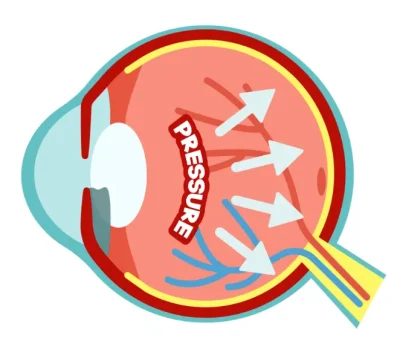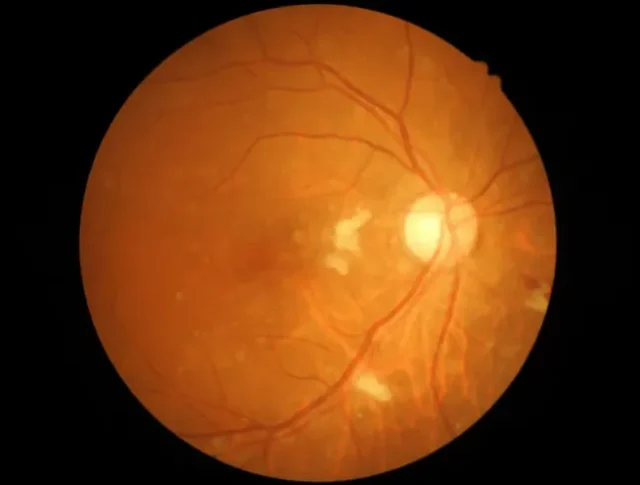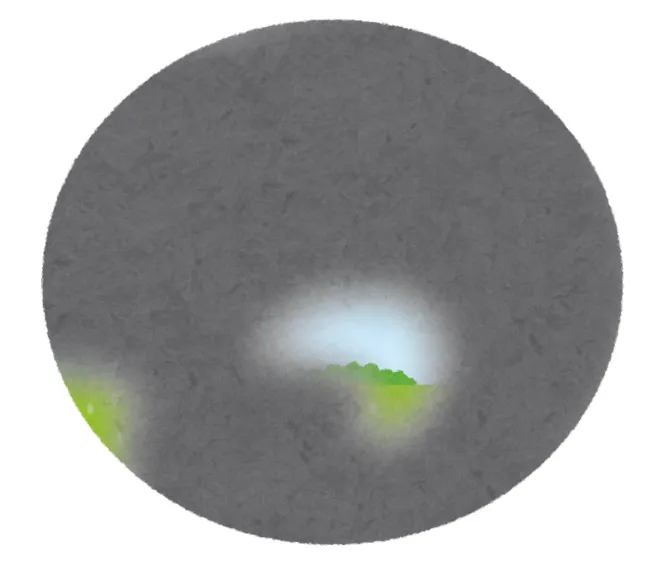Glaucoma Symptoms: Early Signs, Causes, and When to See a Doctor
Have you noticed subtle changes in your vision—like blurriness, eye strain, or trouble seeing at the edges? These may be early signs of glaucoma, a serious eye condition that can lead to irreversible vision loss if left untreated.
At Dr Roy Tan’s clinic in Singapore, we prioritise personalised, compassionate care to help you manage your eye health with confidence.

What Is Glaucoma and Why It Matters
Glaucoma is not a single disease, but a group of eye conditions that damage the optic nerve, the vital connection transmitting images from your eye to your brain. This damage is often linked to high pressure inside your eye, known as intraocular pressure (IOP). However, it’s crucial to understand that glaucoma can also occur with normal eye pressure.
The insidious nature of glaucoma lies in its gradual progression, often without noticeable symptoms in its early stages. This makes it a “silent thief of sight”, slowly eroding your peripheral vision first, often without you even realising it. Left untreated, glaucoma can lead to irreversible blindness. Early detection and management are paramount to preserving your vision and maintaining your quality of life.

What Causes Glaucoma?

Glaucoma primarily arises from damage to the optic nerve. In most cases, this damage is associated with elevated intraocular pressure (IOP), which occurs when the fluid inside your eye, called aqueous humour, doesn’t drain properly. Imagine a sink with a tap running and the drain partially blocked; the water level rises. Similarly, if the eye’s drainage system (the trabecular meshwork) isn’t functioning efficiently, fluid builds up, increasing pressure and pushing on the delicate optic nerve fibres.
However, it’s important to note that some individuals develop glaucoma even with normal eye pressure, a condition known as normal-tension glaucoma. In these cases, the optic nerve may be unusually sensitive to pressure, or other factors, such as blood flow to the nerve, might be compromised. Genetics play a substantial role, meaning if you have a family history of glaucoma, your risk is elevated.
Types of Glaucoma and How They Differ
Glaucoma manifests in various forms, each with distinct characteristics.
Primary Open-Angle Glaucoma (POAG)
The most prevalent form, where the eye’s drainage angle appears open, but the trabecular meshwork (drainage system) doesn’t function effectively. This leads to a gradual build-up of pressure.
Angle-Closure Glaucoma
Less common but potentially more acute. The iris bulges forward, blocking the drainage angle, causing a sudden and dramatic increase in eye pressure, often with severe pain and blurred vision.
Congenital Glaucoma
Present at birth.
Secondary Glaucoma
Caused by other medical conditions or medications.
Normal-Tension Glaucoma
Occurs with normal eye pressure, possibly due to optic nerve sensitivity or compromised blood flow.
Recognising these differences is crucial for timely diagnosis and appropriate treatment.
Who is most at risk of Glaucoma?
Certain factors increase your susceptibility of Glaucoma:
Age
Likelihood rises considerably after 40, and even more so after 60.
Family History
Higher risk if parents or siblings have the condition.
Ethnicity
Individuals of Asian, African, or Hispanic descent face a greater risk of specific types of glaucoma.
Medical Conditions
Linked to diabetes, heart disease, high blood pressure, and hypothyroidism.
Eye Conditions/Treatments
Severe eye injuries, certain types of eye surgery, and long-term use of corticosteroid medications.
Regular comprehensive eye examinations are essential for anyone with one or more of these risk factors.
Glaucoma Symptoms by Stage
Glaucoma is often called the “silent thief of sight” because, in its most common form, primary open-angle glaucoma, symptoms develop so gradually that you might not notice them until permanent vision loss has occurred. For acute angle-closure glaucoma, symptoms are sudden and severe. This makes it crucial to be aware of even the most subtle changes in your vision and to undergo regular eye examinations. The progression of glaucoma symptoms can be broadly categorised into early and late stages, with distinct differences depending on the type of glaucoma.
Early detection is vital as vision loss from glaucoma cannot be restored.
Early-stage glaucoma symptoms you shouldn’t ignore
In the initial stages of primary open-angle glaucoma, symptoms are virtually non-existent. When symptoms do begin to appear, they often involve:
- A gradual loss of peripheral (side) vision.
- Bumping into objects more frequently.
- Trouble seeing things in your extreme side vision while looking straight ahead.
- Poorer vision in dim places or at night.
This gradual constriction of your visual field can be so slow that your brain compensates, making it difficult for you to perceive the loss. Some people might experience a mild, dull ache in the eyes, or notice halos around lights, though these are more commonly associated with acute angle-closure glaucoma.
Late-stage glaucoma symptoms and complications
As glaucoma progresses without treatment, the optic nerve damage worsens, leading to more pronounced and debilitating symptoms:
- Tunnel vision: Feeling as though you are looking through a narrow tube.
- Central vision is usually affected only in very late stages.
- Complications: Can include severe visual impairment, difficulty with daily activities, and even complete blindness in the affected eye or eyes.
- Psychological impact: Depression and anxiety due to vision loss.

By this point, the damage is severe and irreversible. This is why early intervention is so critical to preserving your remaining vision.
Glaucoma Symptoms vs Cataract Symptoms: What’s the Difference?
While both glaucoma and cataracts are common age-related eye conditions that can impair vision, they affect the eye in fundamentally different ways, leading to distinct sets of symptoms. Many individuals may experience both conditions, making a comprehensive eye examination even more essential for pinpointing the exact cause of any visual changes.
At Dr Roy Tan’s clinic, we frequently screen for both conditions during our comprehensive eye assessments, ensuring a holistic understanding of your eye health.
How Glaucoma Symptoms Affects Your Vision

Glaucoma primarily affects your vision by damaging the optic nerve. This damage typically leads to:
- A gradual, often imperceptible, loss of peripheral vision first.
- Progression inwards, eventually leading to “tunnel vision.”
- Central vision is affected only in very advanced stages.
- Irreversible vision loss because optic nerve damage cannot be repaired.
How Cataract Symptoms Affect Your Vision

Cataracts, conversely, affect vision by causing the natural lens inside your eye to become cloudy and opaque. Symptoms typically include:
- Blurred or hazy vision, like looking through a foggy window.
- Increased sensitivity to glare from lights (especially at night).
- Difficulty seeing in low light.
- Faded colours.
- Need for frequent changes in spectacle prescriptions.
Unlike glaucoma, vision loss due to cataracts is reversible through a straightforward surgical procedure.
Treatment Options For Glaucoma Symptoms Once They Appear
Once glaucoma symptoms appear, it usually indicates that some degree of optic nerve damage has occurred. While the vision loss itself cannot be reversed, the goal of treatment is to prevent further damage and preserve your remaining sight. The approach to treatment is highly individualised, depending on the type and severity of your glaucoma, as well as your overall health. At Dr Roy Tan’s clinic, we develop a personalised treatment plan aimed at controlling your eye pressure and protecting your optic nerve.
Common medications for glaucoma symptoms
The most common first-line treatment involves eye drops that help to lower intraocular pressure. These medications work by:
- Reducing the production of aqueous humour.
- Improving the drainage of fluid.
- Classes of eye drops: Prostaglandin analogues (e.g., latanoprost), beta-blockers (e.g., timolol), alpha-adrenergic agonists (e.g., brimonidine), and carbonic anhydrase inhibitors (e.g., dorzolamide). A combination of classes may be used.
- Oral medications, such as carbonic anhydrase inhibitors, may also be used for acute pressure spikes.
Consistency in using these drops as prescribed is paramount for their effectiveness.

Glaucoma Surgery Options
Surgery for glaucoma is generally considered when medications and laser treatments are insufficient to control intraocular pressure or when the disease continues to progress. Various surgical procedures are available:
Laser Trabeculoplasty (SLT/ALT)
Uses a laser to improve fluid drainage.
Minimally Invasive Glaucoma Surgery (MIGS)
Involves tiny implants or devices to create new drainage pathways, often with cataract surgery.
Trabeculectomy
Creates a new drainage pathway to a small reservoir (bleb) under the eyelid.
Drainage Implant (e.g., tube shunt)
May be inserted for some cases.
When Should You See an Eye Specialist for Glaucoma Symptoms?
Given that glaucoma often develops without noticeable symptoms in its early stages, knowing when to seek professional advice is paramount. While some types of glaucoma can present with sudden, alarming symptoms, the most common form, primary open-angle glaucoma, progresses stealthily. This makes regular, proactive eye examinations the most effective way to detect the condition before significant, irreversible vision loss occurs.
Commonly Asked Questions Before Seeing a Specialist
How long can you have glaucoma without knowing?
It is entirely possible to have primary open-angle glaucoma for many years without being aware of it. Due to the gradual nature of peripheral vision loss and the brain’s ability to compensate, individuals can live with the condition for a decade or more before symptoms become apparent. By the time symptoms are noticeable, considerable and irreversible optic nerve damage may have already occurred. This highlights why regular comprehensive eye examinations are the best defence.
How is glaucoma diagnosed?
Diagnosing glaucoma requires more than just a quick look at your eyes; it involves a series of specialised tests designed to assess the health of your optic nerve and measure your intraocular pressure. Since glaucoma often presents without noticeable symptoms in its early stages, these diagnostic tools are indispensable for catching the condition before it causes irreversible vision loss.
Tests used to detect glaucoma early
Several key tests are performed to diagnose glaucoma in a comprehensive eye examination:
- Tonometry: Measures your intraocular pressure (IOP), often using an air puff or gentle probe.
- Ophthalmoscopy (or fundus examination): Involves looking directly at your optic nerve, assessing its colour and shape for damage.
- Perimetry (visual field test): Checks your peripheral vision by presenting lights at various points in your visual field.
- Optical Coherence Tomography (OCT): Provides highly detailed images of your optic nerve and retinal nerve fibre layer, detecting subtle thinning.
- Pachymetry: Measures corneal thickness, which can influence IOP readings.
Can glaucoma be detected in a routine eye exam?
Yes, glaucoma can often be detected during a routine, comprehensive eye examination. A thorough eye check-up typically includes:
- Tonometry to measure eye pressure.
- Examination of the optic nerve.
If these initial tests raise any suspicion, your eye specialist will recommend further, more specialised tests such as visual field testing and OCT scans to confirm the diagnosis. This is why regular eye examinations are so crucial.
Can glaucoma be reversed or stopped?
- Damage to the optic nerve caused by glaucoma is irreversible; vision lost cannot be restored.
- However, the progression of glaucoma can often be stopped or at least slowed considerably with appropriate and consistent treatment.
- The primary aim of all glaucoma treatments is to lower intraocular pressure (IOP) to prevent further optic nerve damage.
Early diagnosis and strict adherence to the treatment plan are the keys to preserving your remaining eyesight.
FAQ about Glaucoma Symptoms
What is usually the first glaucoma symptom?
For the most common type of glaucoma, primary open-angle glaucoma, the first “symptom” is often no symptom at all that a patient would notice.
- Initial vision loss occurs in the peripheral (side) vision.
- It is so gradual that the brain compensates, making it imperceptible.
Regular comprehensive eye examinations are crucial for early detection, often before any noticeable symptoms arise.
Does glaucoma cause pain or just vision loss?
- In the majority of glaucoma cases (primary open-angle glaucoma), there is no pain associated with the condition. The vision loss occurs painlessly.
- However, in acute angle-closure glaucoma, a sudden and rapid increase in eye pressure can cause severe eye pain, often accompanied by headaches, nausea, and blurred vision.
This acute form is a medical emergency due to the sudden onset of symptoms and pain.
Does glaucoma cause eye pressure changes?
In most cases, yes, glaucoma is associated with elevated eye pressure (intraocular pressure or IOP).
- Primary open-angle glaucoma involves a gradual build-up of pressure due to inefficient fluid drainage.
- Acute angle-closure glaucoma involves a sudden and dramatic increase in eye pressure.
However, not everyone with high eye pressure develops glaucoma, and some individuals can develop glaucoma even with normal eye pressure (normal-tension glaucoma). A comprehensive assessment of the optic nerve and visual field is essential for a definitive diagnosis.
Can glaucoma symptoms come and go?
Generally, the vision loss associated with glaucoma, particularly primary open-angle glaucoma, does not come and go.
- The damage to the optic nerve is progressive and permanent.
- Once vision is lost, it cannot be recovered.
However, in cases of acute angle-closure glaucoma, the symptoms (pain, redness, blurred vision, halos) can be intermittent if the block in fluid drainage is temporary, but these episodes still indicate a serious underlying problem that requires immediate attention. It’s crucial not to dismiss any visual changes or eye discomfort, even if they seem to resolve.
Is it possible to live with glaucoma?
Living with glaucoma means committing to a lifelong journey of management and care. While it can be daunting to receive such a diagnosis, with proper treatment and a proactive approach, many individuals with glaucoma maintain excellent vision and continue to lead fulfilling lives. The key lies in understanding your condition, adhering to your treatment plan, and making sensible adjustments to your daily routine.
Managing symptoms through lifestyle and diet
While no specific diet or lifestyle can cure glaucoma, certain choices can support overall eye health:
- Diet: Rich in antioxidants (leafy greens, fruits) and omega-3 fatty acids (fish).
- Exercise: Regular moderate exercise is beneficial; discuss strenuous activities with your eye specialist.
- Overall Health: Maintain a healthy weight, manage blood pressure and diabetes, and avoid smoking.
Glaucoma and driving safety
Driving safety is a critical consideration for individuals living with glaucoma:
- As peripheral vision narrows, your ability to detect hazards from the side can be compromised.
- Regular visual field tests are essential to assess your driving fitness.
- In Singapore, specific vision standards must be met for a driving licence.
- If your vision no longer meets safety requirements, your eye specialist will discuss this with you.
It is your responsibility to ensure you are safe to drive, and alternative transportation arrangements should be considered if your vision is impaired.
Get Checked Early: Book a Cataract & Glaucoma Screening for $88
Don’t wait for symptoms to appear before taking action. Early detection is key to preserving your vision.
At Dr Roy Tan’s clinic, we offer a comprehensive Cataract & Glaucoma Screening for just $88.
This screening is designed to assess your eye health thoroughly, identify any early indicators of glaucoma or cataracts, and discuss your personalised options if either condition is detected.
